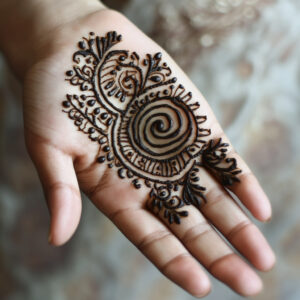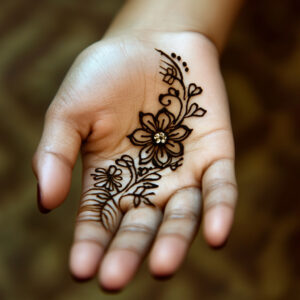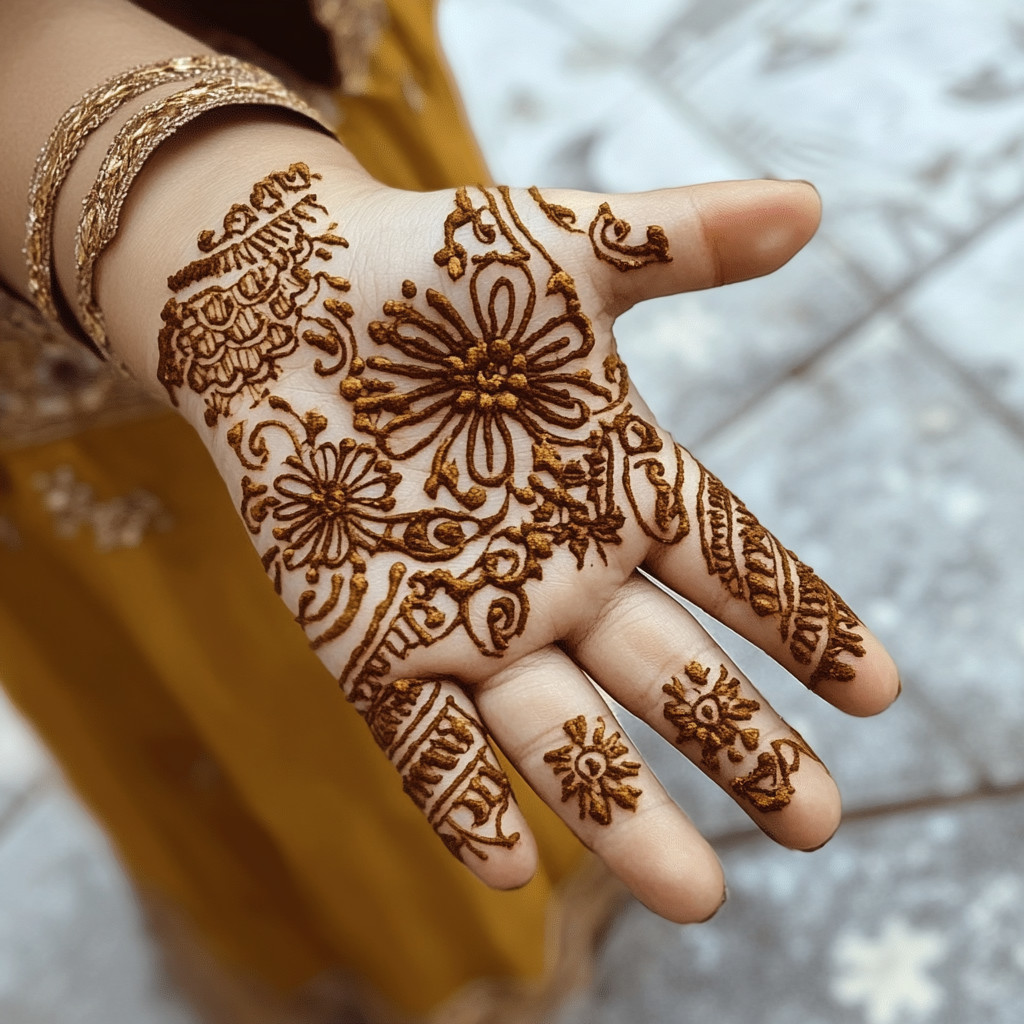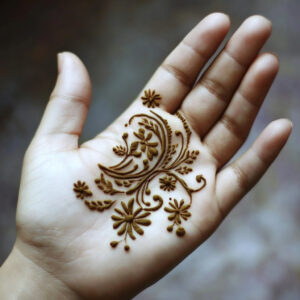Simple Mehndi Designs for Kids Front Hand: A Bridge Between Tradition and Play
There’s something fascinating about how traditions are passed down. In every culture, rituals that were once part of everyday life gradually take on deeper meanings, becoming symbols of heritage and identity. Among these, Mehndi has always stood out to me—not just for its beauty, but for how it evolves with each generation.
It wasn’t until I observed a group of children eagerly waiting to have their hands adorned with simple Mehndi designs that I realized just how much this art form connects the old with the young. Even with the most basic flowers and dots, these simple Mehndi designs for kids’ front hands tell a story. They’re a way for children to engage with a tradition that spans centuries, without even realizing it.
A Window to the Past, Made Playful for the Present
Mehndi, or the use of henna to create designs on the skin, has a history that stretches back thousands of years. It has been used in ancient cultures for everything from blessings in weddings to symbols of protection and celebration. For children, though, these intricate meanings are often simplified into fun, playful designs that introduce them to the practice in a light-hearted way.
What fascinates me is how these simple designs, often nothing more than a flower, a swirl, or a few dots on the front hand, serve as a child’s first step into this rich cultural heritage. It’s a subtle yet profound way to begin understanding that even in simplicity, there’s a thread connecting them to generations past.
Why Simplicity Speaks Volumes
Simplicity in Mehndi design doesn’t mean sacrificing depth. In fact, the minimalist nature of Mehndi for kids speaks to a broader truth about cultural rituals: they adapt to the moment. For a child, a tiny flower or star on their palm isn’t just decoration—it’s an initiation into a much larger story. The designs are light and quick to apply, but they hold a charm that brings joy to both the child and those around them.
A child’s front hand Mehndi might not have the same intricate patterns reserved for weddings or festivals, but it serves a different purpose. It’s an opportunity for children to feel included in the celebrations, a way to engage with a tradition in a manner that resonates with their playful spirit. The simplicity allows the tradition to be experienced without overwhelming them, making it accessible and enjoyable.


A Tradition that Creates Connection
What’s remarkable about Mehndi is how it brings people together. Sitting down to apply Mehndi, whether for adults or children, becomes a moment of connection. For children, it’s an exciting experience—watching the design appear, feeling the coolness of the henna, and then proudly showing off their decorated hands.
But beyond the fun, there’s a deeper connection being made. By sharing these simple Mehndi designs, families are passing down a piece of their heritage. It’s a tradition that doesn’t require long explanations—just a few lines and dots on a child’s hand are enough to spark joy and curiosity, planting the seeds for a deeper understanding as they grow.
Passing Tradition Through Play
In the end, simple Mehndi designs for kids front hand aren’t just a playful way to decorate their hands—they’re a gentle introduction to a tradition that spans generations. These small, simple patterns bridge the gap between play and cultural heritage, creating moments of connection and joy. For the child, it’s just a flower or a star, but for the family, it’s a way to keep traditions alive in the most delightful way.
So, next time you find yourself sharing a moment with the children in your life, why not try a simple Mehndi design? It’s an easy, meaningful way to pass on a piece of history.
Suggested posts to keep exploring Mehndi designs:
- Easy Mehndi Design Front Hand: Finding Beauty in Simplicity – Explore how easy Mehndi designs bring elegance with minimal effort.
- Full Hand Mehndi Design: A Journey of Art Across the Skin – Delve into the intricate beauty of full hand Mehndi and the rich stories they tell.


